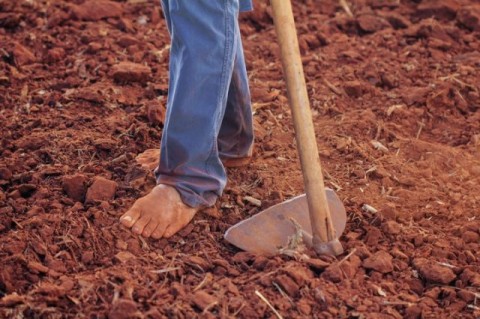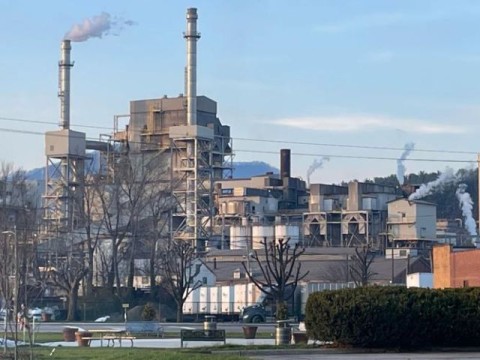Latest News
- Fiesta Hendersonville
- Apparent Elderly Couple Murder-Suicide in Waynesville
- Music on Main Hendersonville Summer 2024
- City of Asheville: Over $4.8 M Affordable Housing Projects
- Continuum of Care Elects Board Members: 2024 Point-In-Time Count Numbers

 WNCTIMES
Serving The Citizens of Western North Carolina Since 1995
WNCTIMES
Serving The Citizens of Western North Carolina Since 1995 Loss of Open Space - Forest Service
Forest Service ShieldU.S. FOREST SERVICE Caring for the land and serving people.
What is open space?
Open space includes all unbuilt areas, whether publically or privately owned, protected or unprotected. Open space lands include forests and grasslands, farms and ranches, streams and rivers, and parks. They provide ecosystem services, support agricultural and forest production, and offer opportunities for recreation. However, open space is being lost to other land uses at an alarming rate.
What is the Forest Service doing to save open space?
The Forest Service works to sustain the environmental, social, and economic benefits of open spaces by:
Convening partners to identify and protect priority open space
What is the Forest Service doing to save open space?
The Forest Service works to sustain the environmental, social, and economic benefits of open spaces by:
Convening partners to identify and protect priority open space
Conducting research to understand societal patterns and drivers of land use conversion
Promoting national tools, policies and markets to help private landowners conserve open space
Providing resources and tools to help communities expand and connect open spaces
Participating in community growth planning to reduce ecological impacts and wildfire risks
The Forests on the Edge project aims to help conserve private forests and lands around national forests and grasslands, identifying areas across the country where forest benefits may be affected by factors such as development, fire, and insect pests.
Why are we losing open space and how will this affect me?
Each day, an estimated 6,000 acres of open space are converted to other uses. Expanding urban and suburban areas often result in a loss of forests, grasslands, and other natural areas. This loss is significant, as open spaces provide many benefits and ecosystem services. From clean water and natural flood control to wildlife habitat and biodiversity to recreation opportunities, there are many diverse benefits derived from open space that we must consider and manage sustainably.
Learn more about ecosystem services
Quick facts
In 2007, forests covered 751 million acres of land in the United States. This is more than four times the size of Texas!
More than half of the forests in the U.S. are privately owned. Federal, State, and local governments have stewardship responsibilities for the other 44 percent.
Promoting national tools, policies and markets to help private landowners conserve open space
Providing resources and tools to help communities expand and connect open spaces
Participating in community growth planning to reduce ecological impacts and wildfire risks
The Forests on the Edge project aims to help conserve private forests and lands around national forests and grasslands, identifying areas across the country where forest benefits may be affected by factors such as development, fire, and insect pests.
Why are we losing open space and how will this affect me?
Each day, an estimated 6,000 acres of open space are converted to other uses. Expanding urban and suburban areas often result in a loss of forests, grasslands, and other natural areas. This loss is significant, as open spaces provide many benefits and ecosystem services. From clean water and natural flood control to wildlife habitat and biodiversity to recreation opportunities, there are many diverse benefits derived from open space that we must consider and manage sustainably.
Learn more about ecosystem services
Quick facts
In 2007, forests covered 751 million acres of land in the United States. This is more than four times the size of Texas!
More than half of the forests in the U.S. are privately owned. Federal, State, and local governments have stewardship responsibilities for the other 44 percent.
More than 80 percent of the U.S. population lives in urban areas. Between 2010 and 2060, total urban and developed land area is projected to increase by 39 to 69 million acres.
Stay Informed
When you subscribe to the blog, we will send you an e-mail when there are new updates on the site so you wouldn't miss them.
About the author
Artificial Intelligence: A Potential Solution for Communities Struggling with Job Loss
Communities that have lost major employers, such as factories or mines, often face significant economic and social challenges. The loss of these employers can result in high unemployment rates, ...
NC Homesteaders MEETUP Fletcher April 26, 2019
North Carolina Youtube Homesteaders MEETUP!When: April 26, 20195pm - 7pmWhere: Bill Moore Community Park (aka fletcher park)85 Howard Gap RoadFletcher, NC 29732 Justin's channel: https://bit.ly/...
Most Popular Post
Carl
12 April 2019
North Carolina Youtube Homesteaders MEETUP!When: April 26, 20195pm - 7pmWhere: Bill Moore Community Park (aka fletcher park)85 Howard Gap RoadFletcher, NC 29732 Justin's channel: https://bit.ly/...
Carl
31 March 2023
Communities that have lost major employers, such as factories or mines, often face significant economic and social challenges. The loss of these employers can result in high unemployment rates, ...
 How to resolve AdBlock issue?
How to resolve AdBlock issue? 

